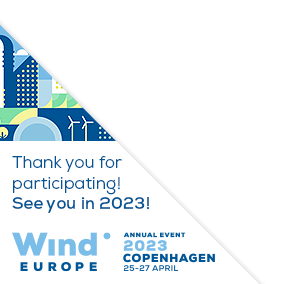Posters
Siblings:
ProceedingsProgrammeSpeakersPostersContent PartnersGlobal Markets TheatreWindTalks for InnovationProgramme Committee & Abstract ReviewersSpeaker's DashboardCome meet the poster presenters to ask them questions and discuss their work
Check the programme for our poster viewing moments. For more details on each poster, click on the poster titles to read the abstract. On Wednesday, 6 April at 15:30-16:15, join us on Level 3 of the Conference area for the Poster Awards!

PO185: POSTER AWARD
AirBASE: a new cost-effective precast foundation concept for large onshore wind turbines
Amaia Martínez Martínez, Chief Technology Officer, HWS Concrete Towers
Abstract
The onshore wind energy sector is looking for innovative products and processes to reduce wind farm construction cost, while guaranteeing time, quality, and reducing risk. However, as wind turbines are getting bigger, wind foundations are starting to demand larger diameters and concrete volumes. This situation is causing problems during construction of the foundations due to required exhausting long pouring concrete hours, appearing concrete curing issues, complex reinforcement placement, etc, leading to significant cost deviations. In this context, the industry has found in precast concrete foundations a potential solution that could avoid the aforementioned problems. However, existing precast concrete foundations, which always follow the same structural scheme as traditional foundations, have been found to be expensive in most of the markets. In order to solve this challenge, HWS has developed, patented, and certified a new precast foundation solution for the wind energy sector, so-called AirBASE. This solution introduces a new structural scheme that profits from serial manufacturing processes, simple transportation and easy on-site assembly. It consists of four on-site isolated footings connected to two/four precast post-tensioned girders placed in a cross-shape. This way, the load transfer from structure to soil is optimized, which can become important as the wind turbine size increases. Its main advantage is the cost reduction: savings can reach up to 30% in certain markets. Other advantages are the industrialization and standardization of the product, which reduces the risk of projects by enhancing the quality control process and reducing construction time and on-site resources.










Follow the event on: